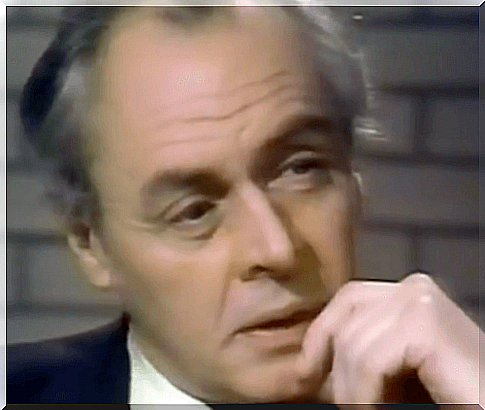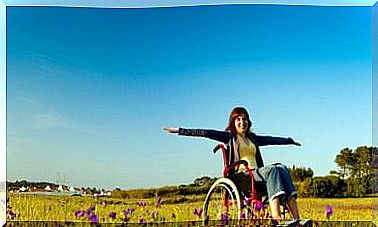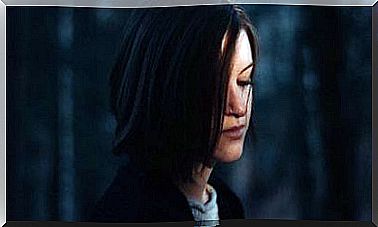Ronald David Laing: Research Into Schizophrenia

Ronald David Laing was a psychiatrist who became famous for his work with schizophrenic patients. He got the idea that people with this disease behaved differently depending on the environment they were in.
Laing was a British psychiatrist known for his alternative approach to treating schizophrenia. He was also the founder of a movement that would later become known as anti-psychiatry, in the 1960s and 70s.
Like many other psychologists and social scientists, Laing worked and researched at the famous Tavistock Clinic. Many years later, he became part of the research team at the Tavistock Institute. The institute made sure that he had more than enough money to carry out his important studies.
He focused primarily on studying schizophrenia and the environment in which schizophrenic patients were treated. Laing believed that they behaved differently depending on the environment they were in. Read on to learn more about Ronald David Laing’s life and his important work .

Ronald David Laing in the early years
Laing was born on October 7, 1927, in Govanhill, Glasgow, Scotland. He is from a working class family, and was the only child of parents David McNair Laing and Amelia Laing.
Until 1945, he attended Hutcheson, a boys-only primary school in Glasgow, where he excelled as an excellent student and musician. He graduated from the Royal Academy of Music in 1944, and began at the Royal College of Music in April 1945.
During his time at that school he was an avid reader of philosophy. Among the writers who interested him most were Freud, Marx, Nietzsche, and, above all, Kierkegaard. He later began studying medicine and psychiatry and received his education in medicine at the University of Glasgow in 1951.
Called to psychiatry
Between 1951 and 1953 he served in the armed forces as a psychiatrist in the Royal British Sanitary Troops. They sent him to the English Army Psychiatric Unit in Netley (near Southampton), and later to the Military Hospital in Catterick, Yorkshire.
Towards the end of 1953 he left the military and began teaching at the University of Glasgow. During this period he went to Gartnavel Royal Hospital to complete his education as a psychiatrist. At this hospital, he tried an experimental treatment environment: the so-called “Rumpus Room”, where schizophrenic patients could have fun and relax.
Both the staff and the patients wore ordinary clothes, and the patients were promised to spend their time on things like cooking and artistic pursuits. These day-to-day activities were intended to provide patients with an environment in which they could interact with staff and other patients in a social, rather than institutional, way.
All his patients got better after this new form of treatment. In January 1956, Laing received his diploma as a psychiatrist.
Ronald David Laing’s working life
At the end of 1956 he was given the title of “senior registrar” (a kind of senior supervisor) at the Tavistock Clinic in London. Here he did research until 1960.
The doctors at the Tavistock Clinic studied primarily patients from the English Navy. Their main purpose was to discover the marks and scares that the war could give people.
Shortly afterwards, the Tavistock Institute emerged as a free, non-profit organization. The Tavistock Institute, founded by the Rockefeller Foundation, conducted research in the social sciences and psychology, but focused on teaching, research, and professional development.
Ronald David Laing worked at the institute for almost 30 years. At the same time, he was accepted by the Department of Psychoanalysis, which certified him as a psychoanalyst.
In 1958, he began the research that formed the basis of his book Sanity, Madness and the Family, published in 1964 . He also created a series of seminars with a wide range of people as participants, several of which later became important partners. Among them were Aaron Esterson and David Cooper.
Ronald David Laing, his works and recognition
His book The Divided Self was published in 1960. It received positive reviews, but the sales did not quite match the critics’ enthusiasm. Not long after, he published Self and Others (1961).
Laing received his certification as a psychoanalyst and founded a private clinic in London. He began experimenting with drugs, especially LSD. In 1962 he was appointed director of the Langham Clinic in London. From then on, he began to gain greater popularity.
In the following years he wrote many of the articles that later appeared in the book The Politics of Experience / The Bird of Paradise. He also published Reason and Violence , co-written with David Cooper, who was also a researcher at the Tavistock Institute.
Kingsley Hall project
He began the Kingsley Hall project in 1965, along with Aaron Esterson, David Cooper and others of the time. The project lasted until 1970.
The Kingsley Hall project was about creating an experimental, non-hierarchical community. Here, schizophrenic patients could work their way through their psychoses without having to use medication, electroshock, or surgery (lobotomy).
The inspiration came from Laing’s work in “Rumpus Room”, and the experiences of his colleagues. Other projects, such as Cooper’s “Villa 21”, were crucial to Kingsley Hall. Cooper’s project created a community for schizophrenic patients, without separation between staff and patients. Their relationship was based on the social.
Thanks to the success of Kingsley Hall, Laing was able to tour the United States. Here came in contact with many other renowned psychoanalysts. In 1967 he took part in the so-called Dialectics of Liberation Congress, which wanted to unite left-wing politics with psychoanalysis.
It was here that he gave the speech, “The Obvious,” which became the title of an anthology of speeches from that Congress.
Privacy
In 1952, he married his girlfriend, Anne Hearne. That same year, they had their first daughter, Fiona. They had four more children after her: Susan, Karen, Paul and Adrian.
After his separation from Anne, Ronald David Laing married Jutta Werner. They had three children together. He also had two more children after that, with two different women.
In 1971, when Kingsley Hall closed, Laing decided it would be the perfect time to take a sabbatical. He decided to go to Sri Lanka and India. During his journey, he began to practice the form of meditation Theravada.
Up until his journey, he closed his private practice. It was the same clinic where he had been doing LSD therapy in the 1960s. It is not known for sure whether he started working in LSD therapy again after returning home from India.
On August 23, 1989, Ronald David Laing died while playing tennis. According to medical documents, he died of a heart attack.

The legacy of Ronald David Laing
Throughout much of his career, Laing was interested in the causes behind schizophrenia. He also placed himself in clear opposition to the common treatments used to treat schizophrenic patients at the time. He tried to find alternatives to hospitalizations and electroshocks, which were so common at the time.
Laing imagined that ontological uncertainty (uncertainty about one’s existence) ignites a defensive reaction. This reaction then causes the person’s self to split up into separate parts. This then leads to the psychotic hallmarks of schizophrenia.
In his book Sanity, Madness, and the Family , he talked about a number of patients. He believed that their mental disorders had been ignited, at least in part, by their relationship with the family. That thought created great fuss at the time.
Although his initial thoughts on schizophrenia were quite controversial, some of his thoughts struck through in recent years. All in all, Ronald D. Laing was a pioneer in the treatment of schizophrenic patients. And they helped to humanize the way we look at them and treat them.









